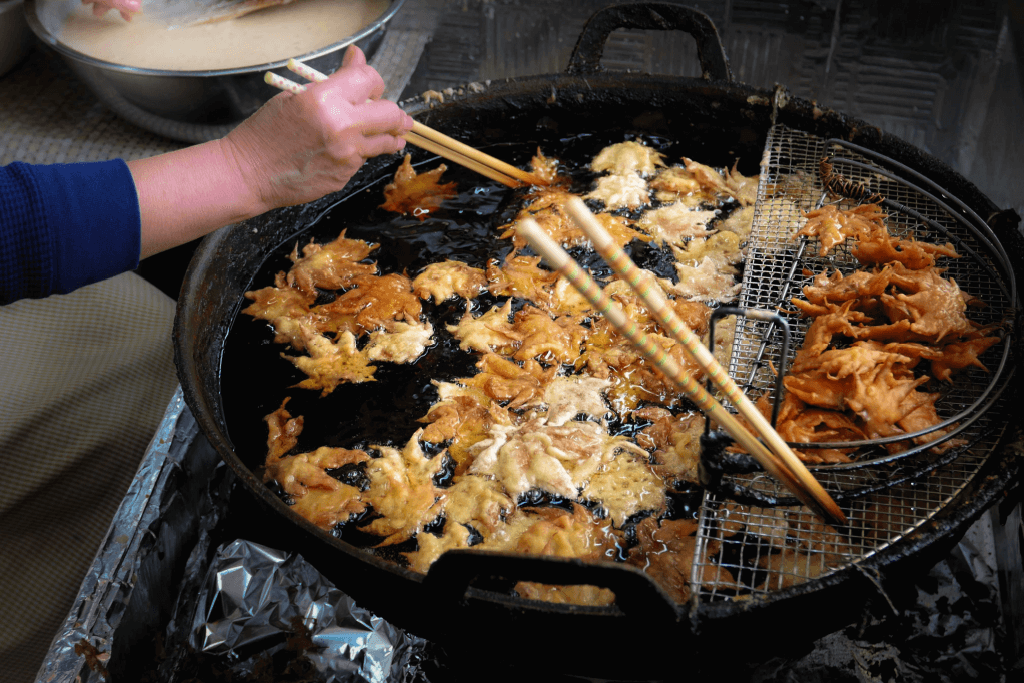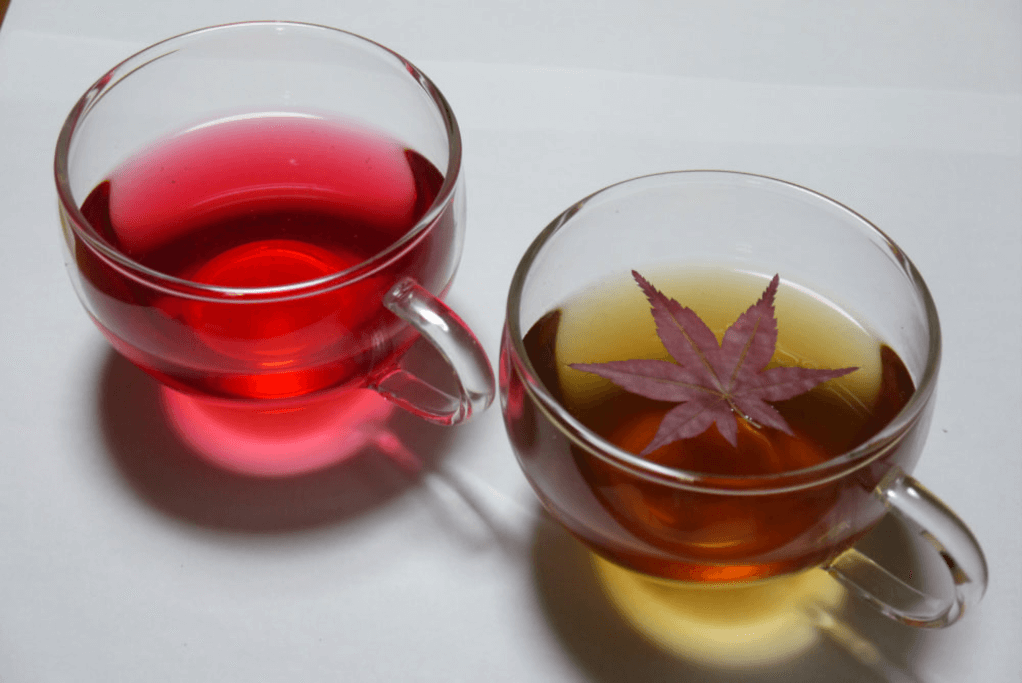Gifu Prefecture, Japanese maple tea, maple leaves
Maple Leaves Tea Magic: A Detailed Exploration

Thalia Harris
Posted on August 21, 2023
Share:

Maple leaves in Japan are famous for their vibrant red appearance, especially in the fall. People from all over the nation flock to the countryside to enjoy them and even have picnics and enjoy themed food and drinks. Let’s look closely at maple leaves, their related delicacies, and even one of the world’s first maple teas!
Why are maple leaves essential in Japan?
Maple leaves (momiji) are essential in Japan because they represent autumn. Like the cherry blossoms that herald spring’s arrival, maple leaves hold the same significance in Japanese culture. As a result, people in Japan have one of their many seasonal picnics during the fall, complete with seasonal delicacies and food. This is called koyo season, which means “red leaf” season.

However, maple leaves aren’t only symbolic of autumn; they also represent beauty, patience, and great fortune. They are a common motif in Japanese woodblock paintings and traditional clothing such as the kimono. As a result, they evoke a sense of rustic nature in Japan, and their brilliant red hue warms hearts as the weather gets colder.
Moreover, because the maple tree is native to northeast Asia and has a centuries-long lifespan, it’s one of the most valuable crops in Japan. Though its purpose is mainly ornamental, this deciduous tree is famous for landscaping and gardening. Some of the loveliest Japanese gardens and parks are home to maple trees, including Arashiyama in Kyoto and Rikugien Garden in Tokyo.

Despite maple trees in Japan not bearing fruit, people manage to incorporate their leaves into fine cuisine. While most people enjoy them at picnics, as mentioned earlier, some enjoy these delicacies while strolling in the countryside. As a result, a small yet notable collection of Japanese maple treats is available during the autumn season.
Are you interested in enjoying a variety of seasonal teas and delicacies? Check out Sakuraco! Sakuraco sends traditional Japanese snacks, sweets, teas, tableware, and more right to your door!
What are some Japanese foods that use maple leaves?
For starters, there’s momiji tempura–a delicacy in Minoh, northern Osaka, and relatively simple. Cooks deep fry the salty, preserved leaves in vegetable oil flavored with sesame oil, sugar, cinnamon, and sesame seeds. Similar to other tempura dishes, it’s light and oily. However, because of its oily taste, many report a nearly non-existent maple flavor to maple syrup in Western countries such as Canada. Nevertheless, they enjoy momiji tempura for its seasonal novelty, especially while strolling the countryside.

Another novelty treat during the fall is momiji manju. Manju is a flour-based wagashi (traditional Japanese dessert) that usually has anko red bean paste inside. While most manju is round, momiji manju is shaped like a maple leaf. In addition to red bean paste fillings, other flavors include chestnut and white bean. Like other types of manju, most people drink it with warm tea, particularly hojicha, roasted green tea.
Since tea is essential to Japanese cuisine, Maple Laboratory in Tajimi, Gifu Prefecture, recently made a premier tea solely made of maple leaves! It’s a rich red color with a sweet scent. Unlike other novelty teas, the bag isn’t mixed with black or green tea leaves. This purity allows for a warm and earthy experience like no other.
What does Japanese maple tea taste like?
When drunk straight, Japanese maple tea tastes like rooibos tea–it’s light, smoky, and astringent, with a clean aftertaste. However, Maple Laboratory’s official website says maple tea also goes well with “milk, maple syrup, sugar or honey.” You can enjoy it iced as well!

As a bonus, you can add yuzu, lemon, or any citrus juice to enhance the flavor and color! Like the blue butterfly pea tea, the acidic citrus juice causes a chemical reaction with maple tea. While lemon juice turns butterfly pea tea purple, the same juice turns maple tea even more red.
Because maple tea and all related products are primarily available during the fall, it’s best enjoyed in colder weather. However, it’s available in limited quantities so it can be rather expensive. Nevertheless, this unique tea from Gifu Prefecture is a one-of-a-kind experience.
Why should I drink Japanese maple tea?
Japanese maple tea evokes the spirit of fall and contains some surprising health benefits because it’s a good source of polyphenols, lutein, and beta-carotene. Moreover, it’s low in caffeine–only possessing 0.5% of the amount in green tea–making it perfect for an evening drink. This tea is perfect if you want to experience the essence of maple leaves in your cup. Have you ever enjoyed a lovely cup of Japanese maple tea? Let us know in the comments below.

Discover authentic flavors with Sakuraco
Get Sakuraco 

Discover authentic flavors with Sakuraco
Get Sakuraco 
Related Articles

Tonkatsu Luxury Restaurants: Best Ones to Try!
Don’t miss out on tonkatsu if you’re traveling to Japan! Tourists often add the meal to their must-eat list because of its delicious and satisfying nature. Even better, you can elevate the experience by going to luxury restaurants across Japan, where you can experience some of the most celebrated pork cutlets.

Mochi: How is Mochitsuki Made in Japan?
Mochitsuki is the Japanese tradition of pounding steamed rice to make mochi for the New Year. Families and neighbors gather to participate in this lively and meaningful tradition. The teamwork involved helps everyone feel a sense of connection.

Konpeito Candy: What Makes This Starry Treat Shine?
If you are a fan of the famous Demon Slayer series, then you probably know that the favorite treat of the adorable Nezuko Kamado is those tiny, colorful little sweets.

Kinako: The Amazing Roasted Soybean Powder!
Kinako is a very popular ingredient that can easily be found in many traditional Japanese sweets. It has a distinctive flavor, standing alongside other classic tastes such as red bean or sesame. Let’s explore this charming ingredient together, and who knows, you might even be able to make it in your own beloved kitchen!



